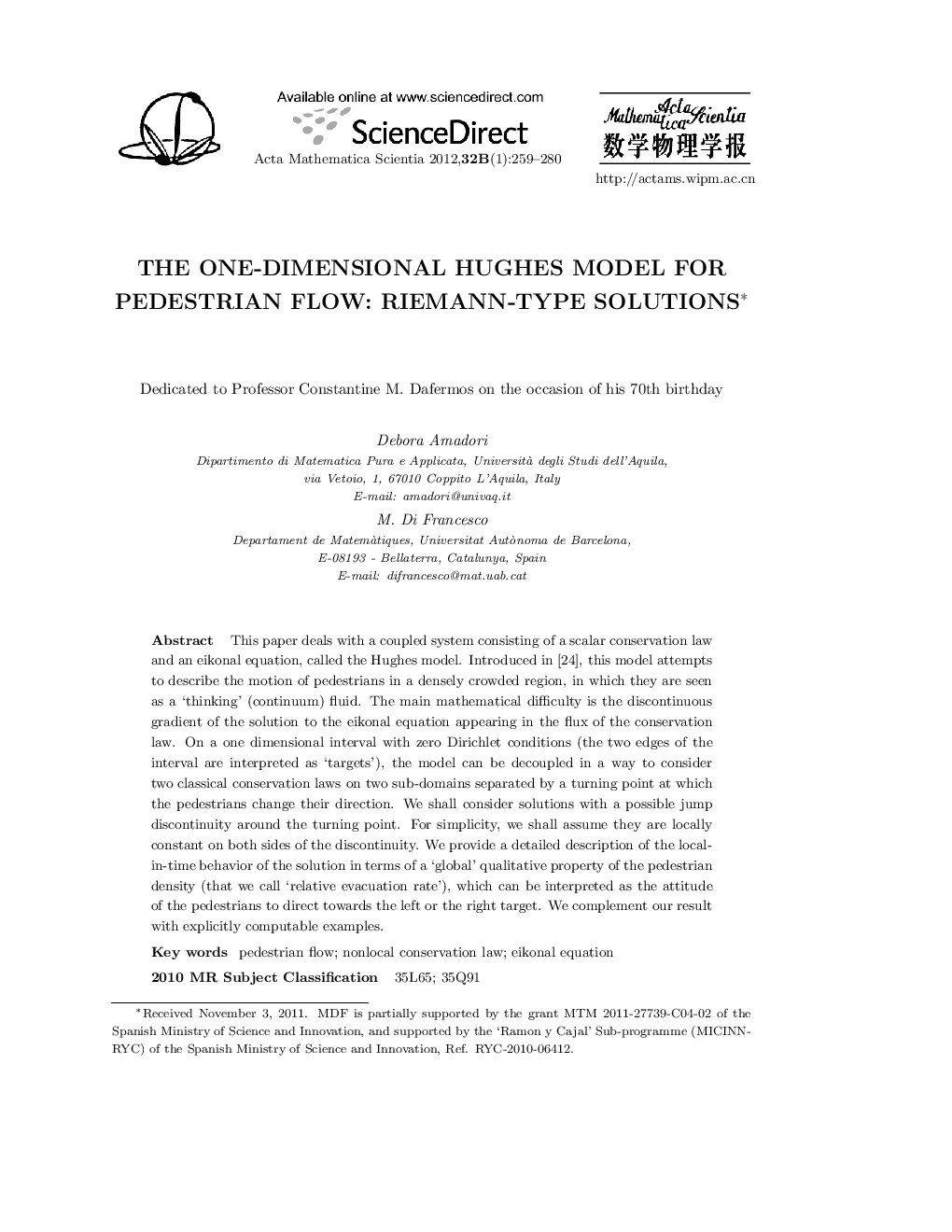| Article ID | Journal | Published Year | Pages | File Type |
|---|---|---|---|---|
| 4664300 | Acta Mathematica Scientia | 2012 | 22 Pages |
This paper deals with a coupled system consisting of a scalar conservation law and an eikonal equation, called the Hughes model. Introduced in [24], this model attempts to describe the motion of pedestrians in a densely crowded region, in which they are seen as a ‘thinking’ (continuum) fluid. The main mathematical difficulty is the discontinuous gradient of the solution to the eikonal equation appearing in the flux of the conservation law. On a one dimensional interval with zero Dirichlet conditions (the two edges of the interval are interpreted as ‘targets’), the model can be decoupled in a way to consider two classical conservation laws on two sub-domains separated by a turning point at which the pedestrians change their direction. We shall consider solutions with a possible jump discontinuity around the turning point. For simplicity, we shall assume they are locally constant on both sides of the discontinuity. We provide a detailed description of the local-in-time behavior of the solution in terms of a ‘global’ qualitative property of the pedestrian density (that we call ‘relative evacuation rate’), which can be interpreted as the attitude of the pedestrians to direct towards the left or the right target. We complement our result with explicitly computable examples.
